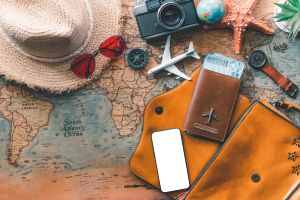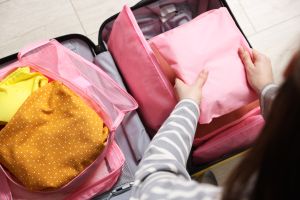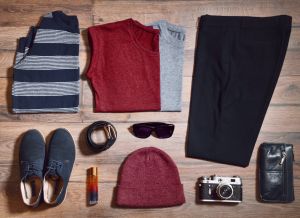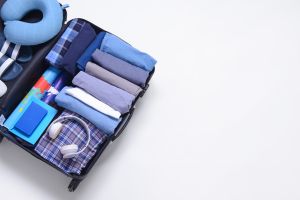
Welcome to Part Two of the Prime Essential Travel Tips series. After discussing on the issue of Travel Planning and Research in the last issue, we now go on to the next phase of travel: Packing. Packing for a journey can be a painstaking task, this is especially so if you are packing for an extended trip. The art of efficient packing lies in striking a delicate balance between preparedness and simplicity. Overpacking can burden you with unnecessary weight and stress, while under-packing might leave you ill-equipped for unforeseen circumstances. Here are some essential tips for mastering the art of travel packing.
- Start with a Packing List
Before you lay out your suitcase, take a moment to create a detailed packing list. Think about the activities you will be doing, the climate you will be encountering, and any specific personal items you need. The basic checklist should include clothes; toiletries; travel documents, cash and credit cards; electronic items; and medicine. Having a checklist not only ensures that you do not forget anything crucial but may also help to prevent overpacking by keeping your priorities in check.

- Research Baggage Allowances and Choose the Right Luggage
Find out about the baggage allowances of your chosen airline. Different carriers have varying restrictions on checked luggage size and weight limits (typically around 25-30kg), and additional fees for exceeding allowances. Different airlines also have varying limits on carry-on (hand) baggage weight limits (typically around 7-12kg). So do check these in advance so that you can pack accordingly and avoid unexpected charges.
Selecting the appropriate luggage is fundamental to successful packing. For short trips or minimalist travellers, a carry-on suitcase or a spacious backpack might suffice. However, for longer journeys or those with specific gear requirements, opt for a larger, durable suitcase with ample compartments or a specialised backpack designed for travel.
Do ensure that your luggage falls within the size limit; and if you are unable to lift heavy weights due to health reasons, use a suitcase (suitcases normally have wheels to roll along) instead of a backpack. Also, make sure that your suitcase/ backpack has adequate safety/security features or purchase locks to secure your bags. For travel to the US, check-in luggage is required to have an integrated TSA-approved lock.
- Utilise Packing Cubes

Investing in packing cubes can revolutionise your packing experience. These lightweight organisers not only keep your clothes neatly compartmentalised, but also help to compress items to maximise space. Additionally, they make it easy to locate specific items in your luggage without having to rummage through everything. They may even help to protect your belongings. For example, packing your toiletries in a packing cube would prevent the rest of your belongings from being ruined should the bottles crack and leak.
- Prioritise and Hand Carry Your Essentials
Pack your essentials in your carry-on bag. These include toiletries, important documents, 1 – 2 days of required medication, electronics and a spare outfit. This precaution ensures that you have the basics, even if your main luggage goes astray. Keep these items easily accessible so as to facilitate compulsory security checks and avoid last-minute scrambling to unpack. Keep your passport, boarding passes, travel insurance documents and printed itinerary in a travel wallet or document organiser. Consider making extra copies of essential documents.
- Pack Versatile, Comfortable Clothing
Maximise space and versatility by packing clothing items that can be mixed and matched to create various outfits. Stick to a colour scheme/theme to ensure coordination, and choose wrinkle-resistant fabrics that are easy to layer. Stretchy fabrics like jersey, spandex and synthetic blends are known for their wrinkle-resistant properties. Knits are also wrinkle-resistant. On the other hand, woven fabrics are prone to wrinkles. Climate is, of course, an important consideration for what you pack. However, even for cold weather trips, it is not recommended to pack heavy sweaters and sweatshirts, which can take up a lot of space in your luggage. Instead, layering is the key to adapting to fluctuating temperatures. Thinner, insulating layers can help you to withstand cold, and these individual layers will also take up less space in your bag and give you more clothing options. So, think in terms of base layers like long-sleeve t-shirts, thin and lightweight jackets, and sweaters. For hot climates, pack moisture-wicking clothing. Do not forget about accessories like hats, scarves, sunglasses or umbrellas for protection against the elements.

- The 5-4-3-2-1 Packing Method
Avoid overpacking. Most people end up not even using half of the things they packed. Furthermore, lugging unnecessary items is time-consuming. The more you pack, the more you unpack. One of the most oft-recommended strategies to overcome the issue of overpacking is the 5-4-3-2-1 packing method. There is no consistent methodology for this method. The 5-4-3-2-1 packing method is really just a guideline to prevent one from overpacking, and you should adjust it according to your own personal needs and preferences.
- Heavy Items at the Bottom; First Outfit on Top
Maintain balance and ease of manoeuvring items by placing the heavier items, like shoes or toiletries, at the bottom of your suitcase (when it is upright). This simple adjustment can prevent your bag from tipping over or becoming unmanageable. Distributing weight strategically ensures your luggage remains stable when standing or rolling. Heavy items at the bottom also prevent your clothes from becoming overly wrinkled. On the other hand, if you know that you will be accessing a certain item of clothing when you arrive, put it on top of the pile. That way, you would not have to dig through everything and it will also be less likely to wrinkle.
- Rolling vs Folding

Advocates for rolling claim that this method saves space by minimising wrinkles and air pockets, while also allowing for better organisation within your luggage. It is not so clear-cut. Rolling does prevent creases and wrinkles, but it may not necessarily help you to make the most of your space. This is especially so when you have puffy items. The best method is a combination of the two, using rolling as the main method and using folded items to fill in pockets. If you do not know how to roll your clothing.
Follow this method:
Tops: Lay your top facedown, fold in the sleeves and roll from the bottom up.
Bottoms: Put the legs together and roll from the waist down.
- Minimise Electronics and Accessories
Be selective and choose the ones you need and may not need and see if you can use one device for multiple jobs. Many mobile phones have fantastic cameras which you can use instead of a bulky digital camera, while a tablet can do the work of a laptop. A portable power bank is a must-bring as well as 1-2 spare charging cables. Also, a universal adapter is a good thing to keep in your luggage. Put all your chargers and cables in a small pouch to keep them organised and accessible. Put all of your gadgets in your carry-on baggage to make them easily accessible and simpler for you to grab them.
- Secure Your Cash and Cards
Carrying money on vacation is a balancing act between safety and utility. Divide your travel cash and credit cards into multiple safe spots whenever possible. If you have got all your money in one place, it only takes one time for a thief to totally wipe you out. Use money belts, leg pouches, waterproof swimming pouches as well as long johns, underwear (for women, there is the Travel Bra which has pockets to stash everything from your passport to cash and cards) and undershirts with built-in pockets for safe storage. If you are carrying a bag, make sure the bag is an anti-theft bag, and has a shoulder strap. Wear it across your chest, rather than on one shoulder, with the opening near your body.

- Leave Room for Souvenirs
If you anticipate bringing back souvenirs or gifts from your travels, leave some space in your luggage or pack a collapsible bag for extra storage. Alternatively, consider shipping items home to lighten your load and avoid exceeding baggage weight limits. Likewise, designate a specific compartment or 1-2 laundry bags for your dirty laundry to separate your used clothes from the clean ones. This makes unpacking a breeze when you return home. PRIME












Leave A Comment